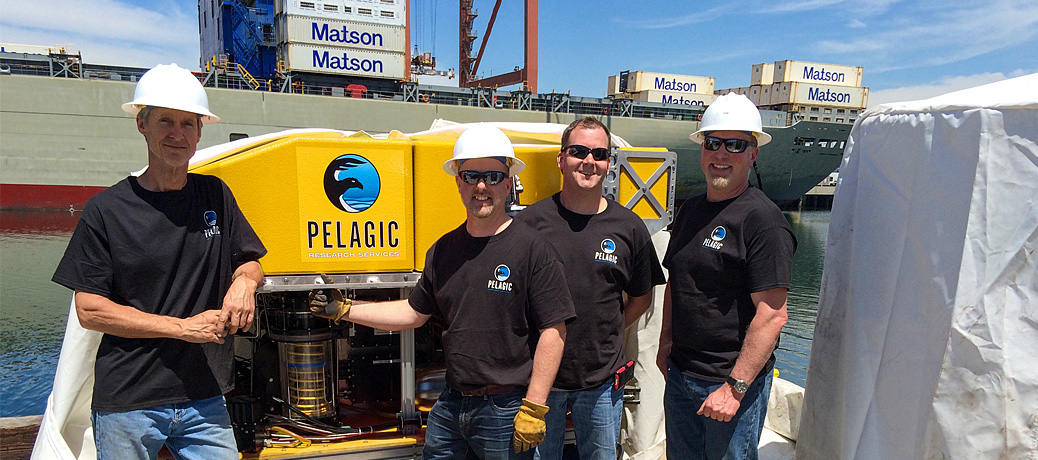Captain Ed Cassano Goes 6,000 Meters Under the Sea
Underwater ROV Exploration the Topic of Upcoming Maritime Museum Talk

Deep down in the cold, remote waters of Southeast Alaska lives a rare species of green sea sponge that could hold the key to curing pancreatic and ovarian cancer. A special molecule within the squishy marine creatures has been shown in tests to target and kill the tumor cells of slow-growing cancers, which conventional therapies struggle to treat. But more study is needed, and the sponges are hard to find, living only in tight bunches hundreds of feet below the surface.
Enter Odysseus. Built by Ed Cassano, former executive director of the Santa Barbara Maritime Museum and now CEO of Pelagic Research Services (PRS), the nimble but tough underwater remotely operated vehicle (ROV) navigated unforgiving ocean environments last summer to collect samples and may soon return to gather more. “It was a very humbling project to support,” said Cassano. “We were just one piece of the puzzle, but this research could have a dramatic impact on cancer treatment.”
This Thursday, March 8, at 7 p.m., Cassano will give a talk at the Maritime Museum (113 Harbor Wy., Ste. 190) about his Captain Nemo–esque adventures with PRS, from studying the bizarrely beautiful hydrothermal vents off Vancouver Island to skirting the colorful deep-sea coral gardens of the Florida shelf. He’ll also discuss how it’s all made possible by Odysseus, which goes where people can’t. The ROV — equipped with an array of cameras and sensors and utilized by researchers, explorers, and filmmakers — is one of a handful in the world that can reach crushing depths of 6,000 meters.
Cassano, who’s worked for the National Oceanic and Atmospheric Administration (NOAA) and managed the Channel Islands National Marine Sanctuary, cofounded PRS and custom-built Odysseus to fill a need in the scientific community. “I’ve worked in marine conservation my entire life,” he said. “And it became clear to me that these particular tools — equipment that can work below diver depths — were few and far between.” Most ocean ROVs, Cassano explained, are owned by either universities, the government, or oil companies. Few are available for contract work.
Someday soon, Cassano said, he’d like to visit the Midway battlefield, where the watery remains of the great WWII sea battle lie. The area has never been properly mapped, and the four Japanese carriers sunk by American torpedoes have yet to be found. Cassano is in talks with NOAA and the National Marine Sanctuary in Hawai‘i to make the mission happen.
For more details about Cassano’s upcoming talk and to buy tickets, visit sbmm.org.



